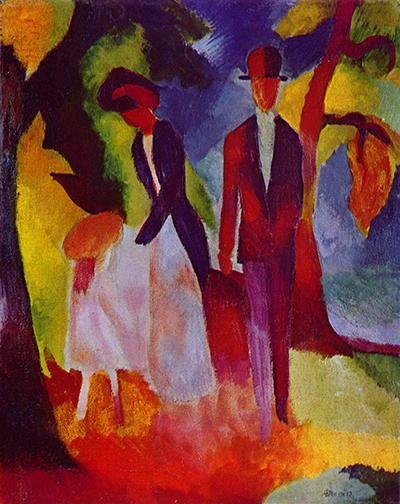August Macke features a young family in this painting, with a husband, wife and small child walking amongst the countryside. The piece was completed in 1913, at the point of the artist's peak.
It is easy to see how this artist would become involved with watercolours, as his approach to form involved reducing a composition down to areas of colour. Whilst there are some gradients of colour found within this painting, you can see clearly sectioned off areas which were probably addressed individually. Together, they make up an overall scene of a family relaxing during some much needed leisure time. Earlier in his career Macke would actually make use of much more detail, but by this point he would leave many faces blank and try to draw more attention away from the figures. At this early stage in the 20th century this type of expressionist, modern art was unusual and groundbreaking, something that is sometimes forgotten when viewing his career all these years later.
Those fortunate enough to see this painting in person at the Staatliche Kunsthalle Karlsruhe can also enjoy some other art from major names whilst there - including the likes of Lucas Cranach the Elder, Claude Lorrain, Nicolas Poussin, Gustave Courbet, Franz Marc, Max Ernst, Juan Gris, Robert Delaunay and Otto Dix. It is one of the finest galleries in all of Germany and few can compete with it's extraordinary collection of German art, dating back many centuries and offering a great overview of this nation's oeuvre from across the ages. This nation is better respected in the present day for its contributions to the development of European art, particularly with members of the Northern Renaissance as well as the Expressionists many years later.




